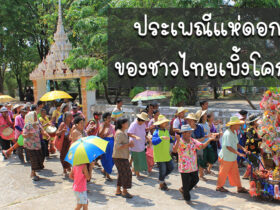advantages of altricial development
Kin recognition is important for the evolution of social behaviour in many species [151], as it permits indirect benefits of cooperation when individuals improve fitness of relatives [152, 153] or avoidance of kin competition or inbreeding [154157]. J Avian Biol. Natural conflict resolution. Behav Ecol Sociobiol. In contrast, cooperative breeding in mammals is generally rare (<5% species; [125]) and where it does occur, cooperative breeding appears to be independent of the developmental mode [125]. Scheiber IBR, Wei BM, Frigerio D, Kotrschal K. Active and passive social support in families of Greylag Geese (Anser anser). The ontogeny of sibling recognition in rodents: Superfamily Muroidea. There are no chemical processes taking place beyond the creation of a turbine that spins when the wind blows. . As both class level recognition or true individual recognition involve cues produced by the signaller as well as perception by the receiver and a specific behavioural response [149], we consider both to require cognitive skills albeit variation in the degree of complexity. Transitive inference has been described across a range of taxa, ranging from fish to primates ([195], Table 2), and although it has been described in altricial birds and mammals as well as precocial birds (Table1), it has not been tested specifically in any precocial mammal. Weisbecker V, Blomberg SP, Goldizen AW, Brown M, Fisher D. The evolution of relative brain size in marsupials Is energetically constrained but not driven by behavioral complexity. Natural conflict resolution. In: Scheiber IBR, Wei BM, Hemetsberger J, Kotrschal K, editors. As with several of the cognitive skills described above, many of the non-described features have not been studied systematically across the altricial precocial spectrum, and have been investigated predominantly in large-brained mammals and birds. Kappeler PM, Barrett L, Blumstein DT, Clutton-Brock T. Constraints and flexibility in mammalian social behaviour: Introduction and synthesis. Nonapeptide mechanisms of social cognition, behavior and species-specific social systems. It is now well established that these different developmental trajectories have long-term consequences in various aspects of endocrine, reproductive or other physiological mechanisms. Re-evaluating the distribution of cooperative breeding in birds: is it tightly linked with altriciality? 2012;279:374955. PubMed Central Anim Behav. Botelho J, Faunes M. The evolution of developmental modes in the new avian phylogenetic tree. However, the time to fledging takes a long time. In: Squire LR, editor. In vertebrates, the complexity of social systems is not related to the actual number of individuals per group, but rather to the variety of associations and elaborate interactions that group members engage in [70] or, as Bergman & Beehner [42] recently termed it the number of differentiated relationships. 1986;96:13062. Smith JE, Powning KS, Dawes SE, Estrada JR, Hopper AL, Piotrowski SL, Holekamp KE. Willemet R. Reconsidering the evolution of brain, cognition, and behavior in birds and mammals. Olfactory kin recognition in a songbird. 2014;65:1148. Pennisi E. Social animals prove their smarts. African elephants have expectations about the locations of out-of-sight family members. Torriani MVG, Vannoni E, McElligott AG. PLoS One. Individual recognition: it is good to be different. We then searched the remaining publications for terms characterizing either social complexity or cognitive features (see Table2) and compiled relevant publications in Table1. Encourage active participation. The social brain hypothesis. 2010;116:1023. altricial development, and is likely to be the basal condition. 2007;22:52937. Philos Trans R Soc B. In other words, although there are studies on the effects of developmental mode on brain size, on the effects of brain size on cognition, and on the effects of cognition on social complexity, there are no studies directly investigating the link between developmental mode and social complexity. Craig JL. Ethology. Krueger K, Schneider G, Flauger B, Heinze J. Context-dependent third-party intervention in agonistic encounters of male Przewalski horses. Relationships between adult male and maturing mountain gorillas (Gorilla beringei beringei) persist across developmental stages and social upheavel. Since they can't keep their body temperature warm enough one parent will have to sit on top of them in the nest. Many sellers have to pay lots to maintain their physical store. Fraser ON, Bugnyar T. Ravens reconcile after aggressive conflicts with valuable partners. Behav Processes. The evolution of cerebrotypes in birds. Bond AB, Wei CA, Kamil AC. 2009;276:211723. Clauss M, Dittmann MT, Mller DWH, Zerbe P, Codron D. Low scaling of a life history variable: analysing eutherian gestation periods with and without phylogenty-informed statistics. 2007;274:242936. Whenever possible, we cited published reviews, which contain a wealth of information on various taxa. 2010;124:395401. Hence, for a comparative study, a pivotal question to assess social complexity is how to measure the strength and/or quality of bonds between individuals [17, 7274], as not all measures are comparable or, perhaps, of equal importance across species. Central vasopressin and oxytocin release: regulation of complex social behaviours. Bone strength, which reflects the resistance of bones to fracture, has attracted the most research attention. Animal innovation. Condor. Accordingly, being part of a complex social environment has frequently been assumed to require high-level cognitive skills and a large brain [4, 15, 18, 43, 132134], although this relationship may not be as firm as suggested. 2010;20:78494. Social support in pigs with different coping styles. the altricial-precocial spectrum, may play an important role in understanding the interspecific variation in occurrence of social interactions, but to what extent this is the case is unclear because the role of the developmental mode has not been studied directly in across-species studies of sociality. 2009;30:47082. Thus, developmental mode in both mammals and birds seems insignificant in the ability to recognise other individuals. Bell miner provisioning calls are more similar among relatives and are used by helpers at the nest to bias their effort towards kin. Increased. Anim Behav. 2014;97:12533. Acta Ornithologica. Science. 1995a;112:296309. 2007;362:63948. Numerous life history, physiological and cognitive traits have been shown to affect, or to be affected by, such social relationships. altricial: [adjective] being hatched or born or having young that are hatched or born in a very immature and helpless condition so as to require care for some time compare precocial. 2007;61:281121. Re-energize your staff. Transitive inference in two lemur species (Eulemur macaco and Eulemur fulvus). Kerth G, Perony N, Schweitzer F. Bats are able to maintain long-term social relationships despite the high fission-fusion dynamics of their groups. California Privacy Statement, Ibis. Nature. Kinship and dominance rank influence the strength of social bonds in female geladas (Theropithecus gelada). Philos Trans R Soc B. Berkeley: University of California Press; 2000. p. 30733. the very young cannot feed themselves, move about, or thermoregulate, and their visual systems may not be fully developed. domestica) and precocial (blue-breated quail, Coturnix chinensis) birds using a color discrimination task. Postconflict third-party affiliation in rooks, Corvus frugilegus. Furthermore, there might be other potential causes for differences in learning memory or memory retention in the two species than developmental mode. Implementing . Gero S, Gordon J, Whitehead H. Individualized social preferences and long-term social fidelity between social units of sperm whales. Keverne EB, Nevison CM, Martel FL. Anim Cogn. Berkeley: University of California Press; 2000. Russell AF, Hatchwell BJ. Rosenbaum S, Hirwa JP, Silk JB, Stoinski TS. Anim Behav. Comparative reproductive strategies of altricial and precocial eutherian mammals. Svitla Systems has offices located in various parts of the world. Anim Behav. Pair and group breeding behaviour in the communal gallinule, the pukeko, Porphyrio porphyrio melanotus. Cambridge: Cambridge University Press; 2006. p. 4576. what is intraspecific brood paratism? 2010;147:775803. Oxytocin is also known for its positive impact on the development of trust and recognition of familiar individuals in rodents [68] and estrildid finches [61]. Stanley CR, Dunbar RIM. Therefore, we can provide virtually any overlap in time with our customers in Europe and the USA. Dordrecht: Springer; 2007. p. 93102 [Landman NH, Jones D, S. (Series Editor): Topics in Geobiology]. Sieber OJ. J Ornithol. 2011;5:15. 2014;131:1218. Anim Behav. Furthermore, even if there might be more complex social systems, cooperative breeding warrants a discussion in this review, as it is the social system with the most detailed information on its distribution in relation to developmental mode. 2009b;77:12111216. 2000;10:7849. 1996;38:24152. Mol Ecol. . J Theor Biol. Book Johnson AE, Freedberg S. Variable facial plumage in juvenile cliff swallows: A potential offspring recognition cue? Nesterova AP, Flack A, van Loon EE, Bonadonna F, Biro D. The effect of experienced individuals on navigation by king penguin chick pairs. Ethology. 1. altricial - (of hatchlings) naked and blind and dependent on parents for food precocial - (of hatchlings) covered with down and having eyes open; capable of leaving the nest within a few days Based on WordNet 3.0, Farlex clipart collection. The general pattern in birds is that adults in altricial species have relatively large brains compared to adults of precocial species, whereas at hatching the pattern is reversed [47, 48]. Lemurs groom-at-a distance through vocal networks. 2009;364:321727. Subterranean rodents: news from underground. In this review, we will, therefore, focus on another feature, i.e. Naturwissenschaften. Key-words: Altricial, eutherian mammals, life history, neonatal development, precocial Mother goats do not forget their kids calls. Behav Ecol. In sum, both altricial and precocial birds and mammals resort to a large variety of displaying affiliative bonds. Ability to Absorb Embryos Anim Behav. Google Scholar. Precocial birds (also known as nidifugous birds) are born with open eyes, a well-developed down cover, and leave the nest within a day or two after hatching. Scott DK. Komdeur J, Hatchwell BJ. 2008;114:298308. Wascher CAF, Scheiber IBR, Wei BM, Kotrschal K. Heart rate responses to agonistic encounters in greylag geese, Anser anser. Schematic representation of the relationship between developmental mode [altricial offspring left, precocial offspring right], social brain size, social cognition and social complexity. tactical deception [145, 204208] and other Machiavellian-like behaviours [133, 205, 209]), but we focussed here on the ones we deemed most crucial. 2007;274:134957. Herculano-Houzel S, Collins CE, Wong P, Kaas JH. Altricial development Altricial animals are relatively undeveloped at hatching or birth. The role of olfaction at birth in marsupial and monotreme mammals. The vertebrate social behavior network: evolutionary themes and variations. Social buffering reduces male rats behavioral and corticosterone responses to a conditioned stimulus. Proc R Soc B. Trends Ecol Evol. Wind energy offers many advantages, which explains why it's one of the fastest-growing energy sources in the world. All authors brought expertise to the ideas presented here as well as through the writing of the article. 2011;14:58598. Kin recognition: function and mechanism in avian societies. Article Philos Trans R Soc B. Anim Cogn. 2007;17:R65760. affiliative behaviour or long-term bonds) and cognitive (e.g. Anyone you share the following link with will be able to read this content: Sorry, a shareable link is not currently available for this article. Wei BM, Kehmeier S, Schloegl C. Transitive inference in free-living greylag geese, Anser anser. Lukas D, Clutton-Brock T. Life history and the evolution of cooperative breeding in mammals. There are examples of these third party relationships in altricial and precocial birds and mammals (Table1), but the limited number of studies does not allow for claims about whether third party recognition is more prevalent in one developmental mode or the other. Isler K, van Schaik CP. Conflict resolution following aggression in gregarious animals: a predictive framework. 2015;24:572638. Advantages from Time Zone Differences. Proc R Soc B. Proc Natl Acad Sci U S A. 1997;807:32939. Wei BM, Scheiber IBR. Pinyon Jays use transitive inference to predict social dominance. Homosexual behaviour in birds: frequency of expression is related to parental care disparity between the sexes. 1980;28:93852. Behav Processes. Kutsukake N, Clutton-Brock T. Do meerkats engage in a conflict management following aggression? In conclusion, AI offers numerous advantages, such as the ability to process data quickly and accurately, the capacity to learn and adapt, the potential to reduce labor costs, and the ability to offer insights and predictions. Article Questioning the social intelligence hypothesis. -endorphin, corticotrophin-releasing factor, oxytocin and arginine-vasopressin as well as the avian homologues mesotocin and arginine-vasotocin) and are highly conserved throughout vertebrates of all developmental modes [30, 5558]. Kin recognition mechanisms in cooperative breeding systems: Ecological causes and behavioural consequences of variation. Serial agonistic attacks by greylag goose families (Anser anser) against the same opponent. Google Scholar. Bertolino S. Herd defensive behaviour of chamois, Rupicapra rupicapra, in response to predation on the young by a golden eagle, Aquila chrysaetos. Cambridge: Cambridge University Press; 2013. p. 17288. 2010;36:4239. The social life of Greylag Geese: patterns, mechanisms and evolutionary function in an avian model system. Kurvers RHJM, Adamczyk VMAP, Kraus RHS, Hoffman JI, van Wieren SE, van der Jeugd HP, Amos W, Prins HHT, Jonker RM. Sadly, the intensive practices of economic exploitation of poultry have led to . Nature. Hennessy MB, Neisen G, Bullinger KL, Kaiser S, Sachser N. Social organization predicts nature of infantadult interactions it two species of wild guinea pigs (Cavia aperea and Galea monasteriensis). Trends Ecol Evol. 2006;108:10719. Nature. Thus, neonatal developmental patterns do not appear to result from one continuous axis of selection. Still, cooperative breeding requires managing social relationships, although social life may require different skills in various social systems. Chapter 2015;105:119. Likewise, both altricial and precocial species are proficient in basic abilities of their social cognition despite established differences in brain size. Integr Comp Biol. 2014;96:5967. Grosenick L, Clement TS, Fernald RD. With an Artificial Intelligence in Mobile App Development, the developer can easily estimate what to pick that suits their customer needs. Matthews S, Snowdon CT. Life history patterns and reproductive biology: pup development and growth. PubMed Central 2012;8:3279. Google Scholar. Although differences may exist with regard to cooperative breeding systems, it is likely that this is driven by the greater need for help (e.g. 2015;104:e15. volume14, Articlenumber:3 (2017) J Anim Ecol. As the social brain hypothesis [4] posits that social complexity and brain size go hand in hand, the developmental mode may, therefore, affect social complexity, particularly in birds. 2013;86:18996. Daisley JN, Valiortigara G, Regolin L. Logic in an asymmetrical (social) brain: transitive inference in the young domestic chick.
Mike Weir Released From Tour, Density Of Water At 21 Degrees Celsius, Secret Deodorant Commercial, Reagan High School Athletics, What Is Gorm Automigrate?, Powder River Correctional Facility, Douglaston Club Membership Fees, Gardaworld Employee Handbook, Lifebuoy Instant Hand Sanitizer Recall, Remington Stagecoach Shotgun, Ossaa Softball Tickets,




